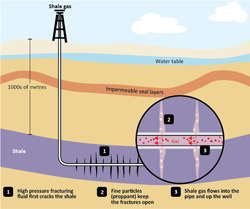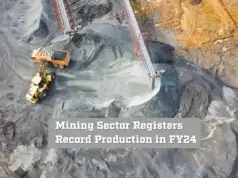 After the success of Shale Gas exploration in USA, every energy starved nation in the world is planning to experiment US experience in their country. But recent TERI report may throw a dampener on such efforts.
After the success of Shale Gas exploration in USA, every energy starved nation in the world is planning to experiment US experience in their country. But recent TERI report may throw a dampener on such efforts.
“One of the key determinants of the viability of this technology is the availability of large quantities of clean water. This policy brief raises a red flag on this complementary input for exploiting shale gas resources in India, given that India is a water stressed country, and is fast approaching water scarcity conditions”, warns the report. Incidentally, exploration and production of shale gas in the USA has been a game changer, making the country self-sufficient in natural gas over the last few years.
Even in USA many environmentalists have raised their objection against shale gas exploration as the technology consumes lot of water for breaking up the rock is known as “hydro-fracturing” or “fracking”. The number of wells to be drilled for shale gas far exceeds the number of wells required in the case of conventional gas and the land area required is a minimum of 80 to 160 acres.
The Ministry of Petroleum and Natural Gas (MoPNG) has identified six basins as potentially shale gas bearing. These are Cambay, Assam-Arakan, Gondwana, Krishna-Godavari, Kaveri, and the Indo-Gangetic plain. In a study conducted by the United States Geological Survey (USGS), recoverable resources of 6.1 tcf have been estimated in 3 out of 26 sedimentary basins. The government had also put out in 2012, a draft policy for the exploration and exploitation of shale gas, inviting suggestions from the general public, stakeholders, environmentalists, etc. Even the draft policy has talked about the water requirement in shale gas exploration. The draft says “This may require large volume of water, 3-4 million gallons per well.”
According to TERI India is water scarcity country and diversion of water for shale gas exploration will only aggravate the water scarcity in the country. “Potential shale gas bearing areas, such as Cambay, Gondwana, Krishna-Godavari, and the Indo-Gangetic plains are also areas that will experience severe water stress by 2030”, the report cautions.








